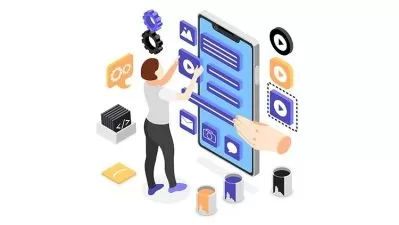Rest API Testing (Automation) with Playwright & TypeScript
Cameron Bradley
4:46:03
Description
Learn how to develop a robust Playwright & Typescript API automation framework from the ground up.
What You'll Learn?
- How to setup your own local development environment. (IntelliJ and VSCode)
- Planning out our API automation suite coverage with Postman.
- Developing our first automation test with Playwright and JavaScript.
- GET, POST, PUT, PATCH and DELETE automation tests with Playwright & JavaScript.
- Developing our first GET cucumber scenario together.
- Introducing Cucumber World into our framework - Segregated test context.
- Passing our retrieved API response in segregated context across step definitions leveraging Cucumber World.
- Adding Lintrc to ensure code quality for our automation framework.
- Customising the cucumber-js on runtime - Dynamic Cucumber runtime arguments.
- Adding ENV files for better environment variables management.
- Introducing Global Configuration into our framework to enable dynamic host routes.
- Asserting on our JSON response within our automation test.
- Adding the Cucumber html reporter to review automation results.
- Adding parallel and retry capabilities to our automation framework.
- DELETE’ing our first post and asserting on an empty JSON response.
- Posting a custom json payload to our create new records.
- Editing posts with PATCH and asserting on our edited response.
- Updating posts with PUT.
- Asserting on unsuccessful response if we attempt to update a post that does not exist.
Who is this for?
More details
DescriptionThis course has been designed to simulate a real-world experience in building both a barebones Playwright and JavaScript API Automation framework and a Cucumber, Playwright & TypeScript API automation framework from the ground up for a fully-featured API.
Upon completion, you will be able to apply your learnings and the automation framework you have built into your respective companies and projects. We are confident you will become an expert in building a world-class automation framework.
Our course and the automation framework we will build together has been developed with guidance from some of the globes leading testing and software engineering professionals and because of that we believe we can offer an incredible course where we will:
- Plan and roadmap your automation coverage with Postman.
- Develop your API automation framework against a real API.
- Build two end-to-end automation frameworks from the ground up for a full-featured end-to-end API.
- Evolve your skills and continuously improve your automation framework as we progress through the course
- Learn how to build an object-orientated – engineer-reviewed and approved automation framework.
We want this course to be the best decision you have ever made for your personal growth when it comes to improving your knowledge and skills in API test automation framework architecture.
Across many hours of exciting content, I will be at the bottom right of your screen instructing and cheering you along throughout the course. You will have everything you need to learn how to build a robust API automation framework.
Who this course is for:
- Manual testers interested in learning Automation
- Automation Engineers
- Software Testers
- Software Engineers
- IT Professionals
This course has been designed to simulate a real-world experience in building both a barebones Playwright and JavaScript API Automation framework and a Cucumber, Playwright & TypeScript API automation framework from the ground up for a fully-featured API.
Upon completion, you will be able to apply your learnings and the automation framework you have built into your respective companies and projects. We are confident you will become an expert in building a world-class automation framework.
Our course and the automation framework we will build together has been developed with guidance from some of the globes leading testing and software engineering professionals and because of that we believe we can offer an incredible course where we will:
- Plan and roadmap your automation coverage with Postman.
- Develop your API automation framework against a real API.
- Build two end-to-end automation frameworks from the ground up for a full-featured end-to-end API.
- Evolve your skills and continuously improve your automation framework as we progress through the course
- Learn how to build an object-orientated – engineer-reviewed and approved automation framework.
We want this course to be the best decision you have ever made for your personal growth when it comes to improving your knowledge and skills in API test automation framework architecture.
Across many hours of exciting content, I will be at the bottom right of your screen instructing and cheering you along throughout the course. You will have everything you need to learn how to build a robust API automation framework.
Who this course is for:
- Manual testers interested in learning Automation
- Automation Engineers
- Software Testers
- Software Engineers
- IT Professionals
User Reviews
Rating
Cameron Bradley
Instructor's Courses
Udemy
View courses Udemy- language english
- Training sessions 40
- duration 4:46:03
- Release Date 2023/03/16















